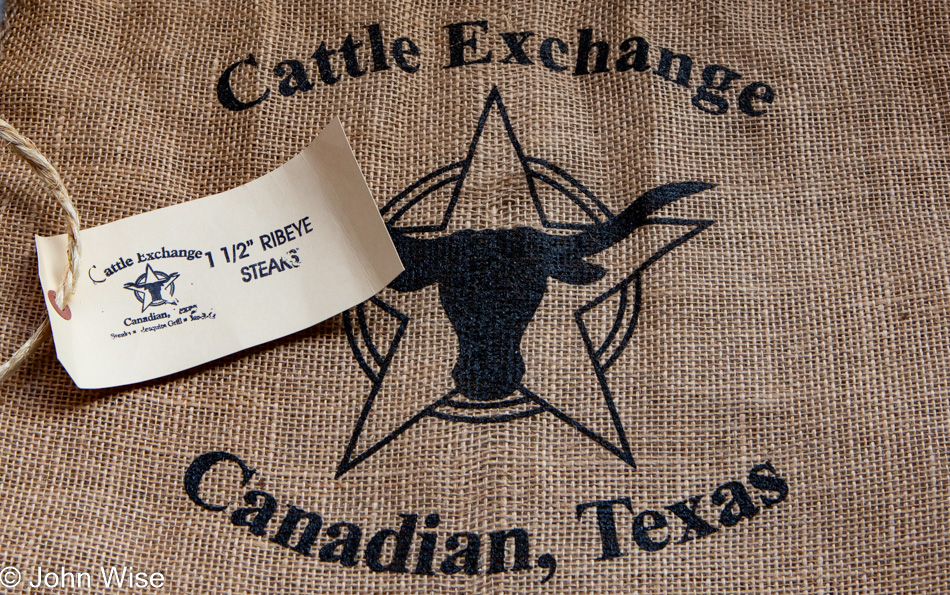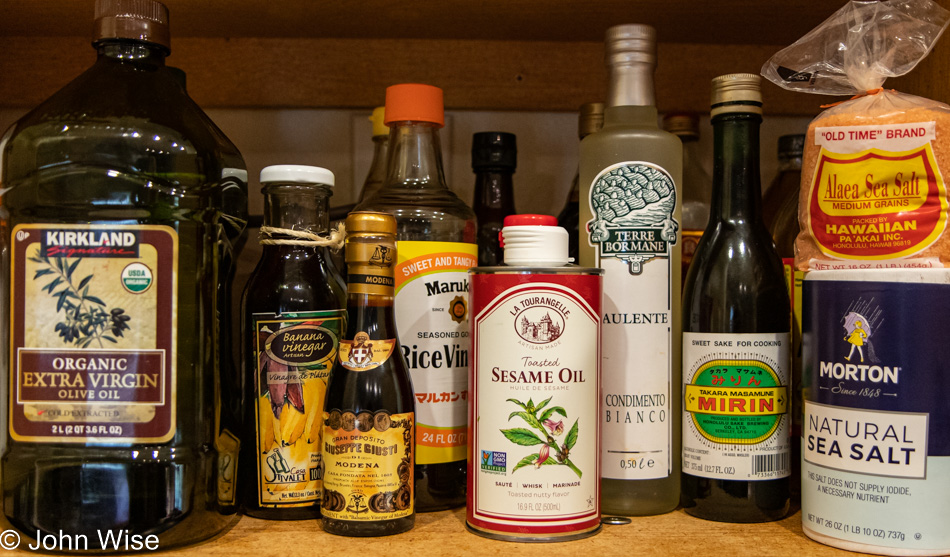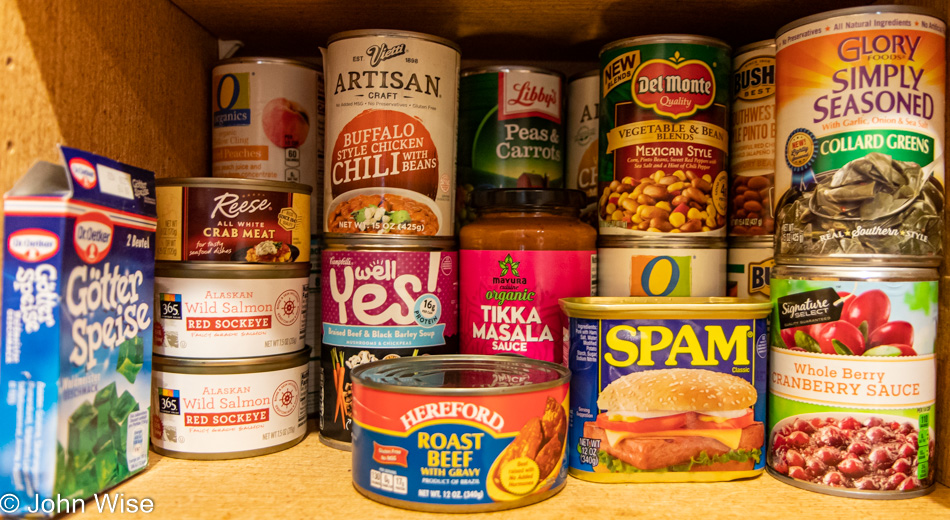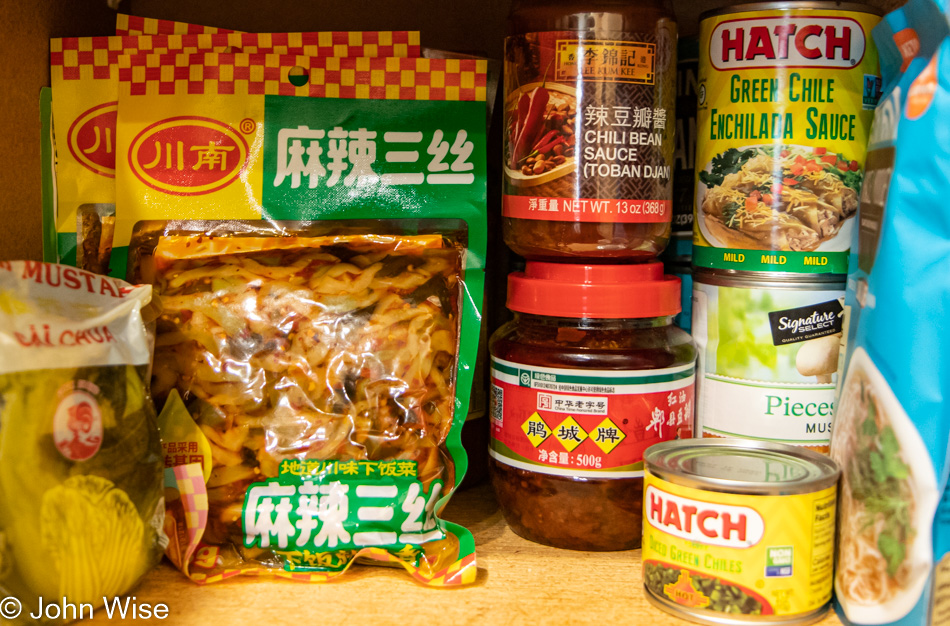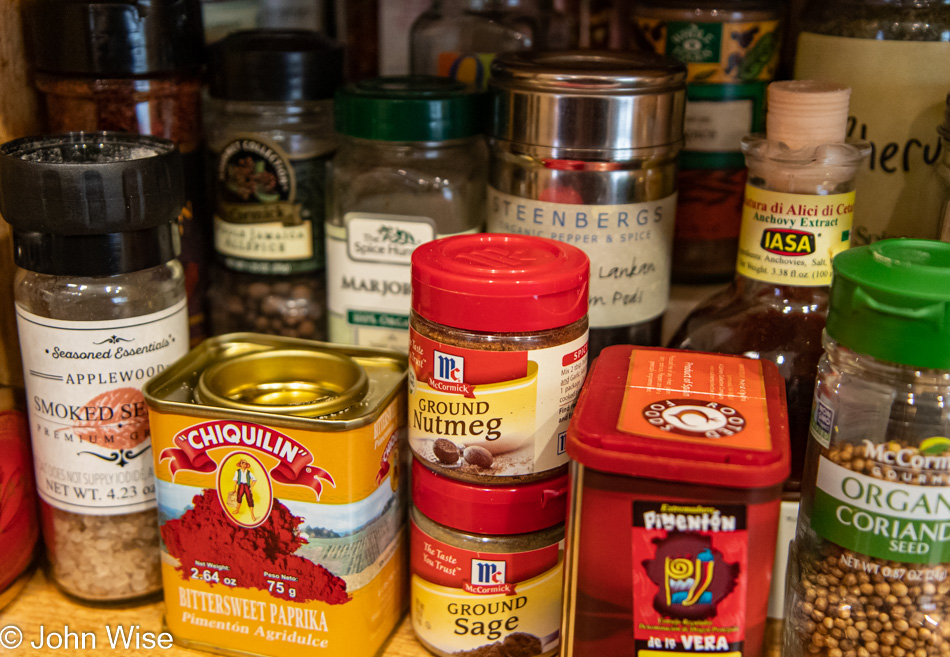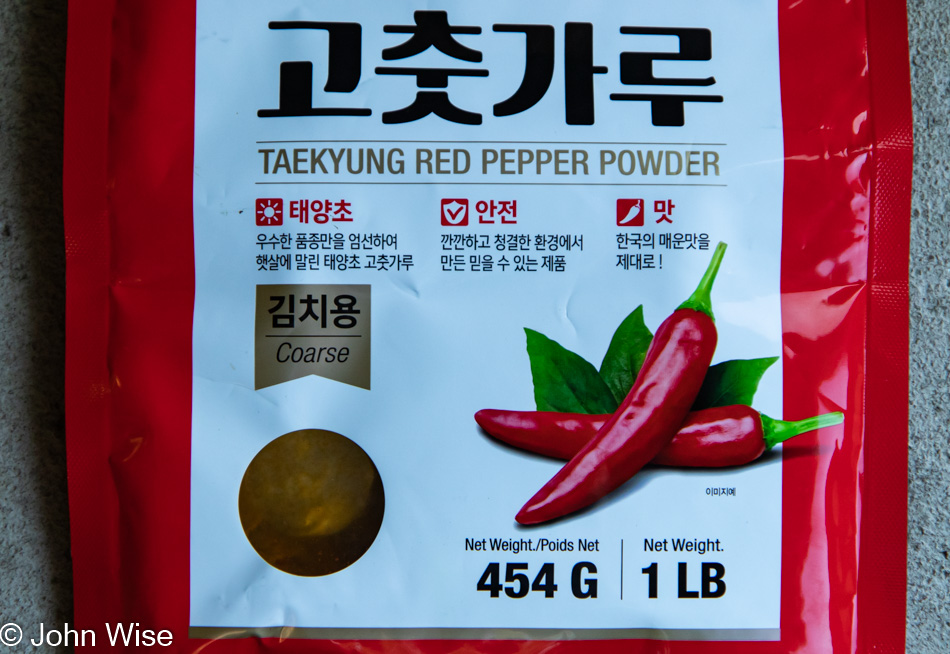
Let’s start with being thankful for last night’s dinner. Before dipping into this very American holiday today, we feasted last night on German grilled bratwursts from Heidelberg Bakery in Phoenix, Arizona. Our brats were wonderfully paired with some Mildessa sauerkraut. Two of the five brats from dinner and nearly half a can of the kraut ended up in our scrambled eggs this morning. We checked the internet last night to be sure we should try something that sounds kinda weird, but others were gung-ho about mixing these awkward ingredients together, so we gave it a shot and can assure you that we’d do it again. Pictured is the kitchen from the Cozy Cottage we found on Airbnb.

This was our bedroom last night before we pulled off the blankets and pillows to make room for our comforter and pillows from home. But we weren’t ready for bed yet, not even close. We had a hot tub outside waiting for us, timed to bring it to peak temperature at 8:00 in the morning and 9:00 at night. Even before we got into that under a moonlit sky, we took a pastry-wrapped brie loaded with huckleberry from the Blue Heron Cheese Company out of the fridge and threw it in the oven. With apples left from the dozen we picked in Gold Beach, Caroline sliced some up for our dessert extravaganza of baked brie, compote, and apples. How we didn’t pass out right then remains a mystery, but somehow, we found the energy to venture into the cold evening air to bask in the hot tub. Andre, the owner of our accommodation, even provides an outdoor shower for rinsing off after getting out of the chlorinated water.
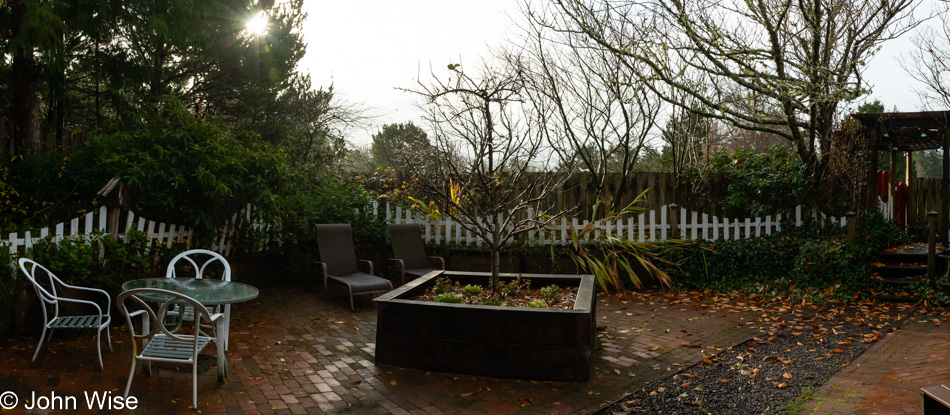
This brings us to the here and now. Over to your right, and hardly visible, is our little red gate, which is a private entrance. To the right of that is the hot tub, which I hope to get a good photo of before we leave. Our turducken is thawed and ready for the oven; it will require 2.5 hours to bake, and we might be meeting a friend from up here later today, too. Right now, though, we are going for a mile-and-a-half walk (2.4km) each way down to the beach. The next photo you see is from that walk.

We’d been back from our walk a few hours before I could muster the energy to start writing this stuff; maybe I needed a break after 15 straight days of writing. After lunch, I was able to load up the photos. And an hour later I managed to prepare them for posting and even uploaded them. Then they sat here neglected while I goofed off entertaining myself. Caroline’s been sitting behind me on the couch, knitting my socks while watching a documentary series about how we see things.
As for the walk, it was brilliant, perfect, wonderful, and every other superlative that I could list as I try to convey how much we appreciate these Thanksgiving Day walks along the ocean. Just take a look at the beauty of the sea and imagine yourself here on this gorgeous fall day.
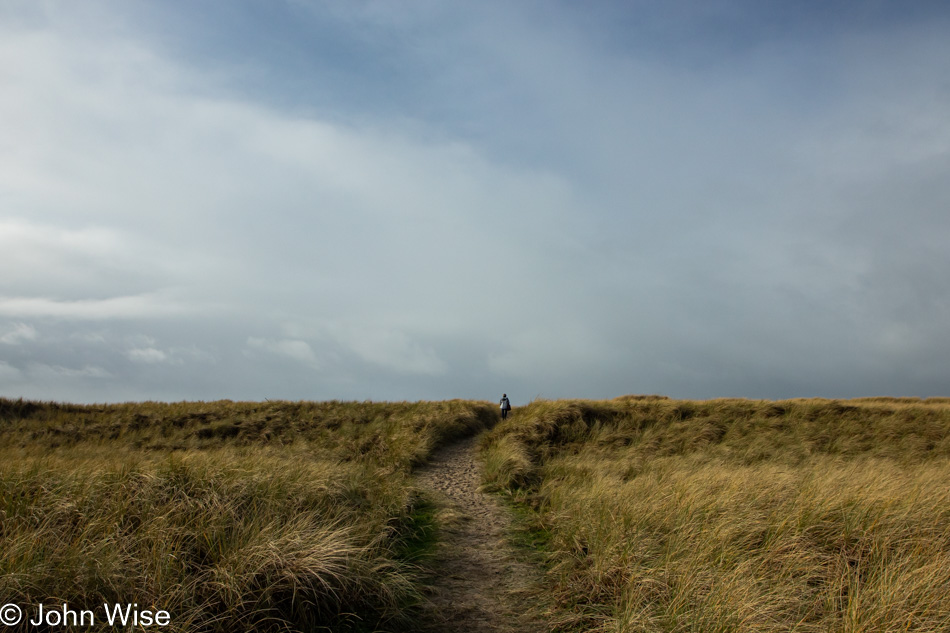
The other day, Caroline suggested we create a kind of “meta entry” about our trips to Oregon where we post an image taken from the 18 years we’ve been coming up here and feature them sequentially by location instead of date so we can see the extent of our stops. Today, we extended this to a meta entry about Thanksgiving, where we feature an image from all of the Thanksgivings we have photos for.
True, this little segue has nothing to do with this photo of Caroline cresting the grassy sand dune that will take us out to Manzanita Beach, but I’m at a bit of a loss to share anything else. I’m also aware enough that it isn’t so much what I write today that will be important as much as how it reads in the future when we are reminiscing about our longest-ever trip to Oregon. Minus drive time to and from Phoenix, Arizona, we’ll have been up here for 16 consecutive days. I wonder if this is possibly longer by twice than our longest previous vacations on the Oregon coast?
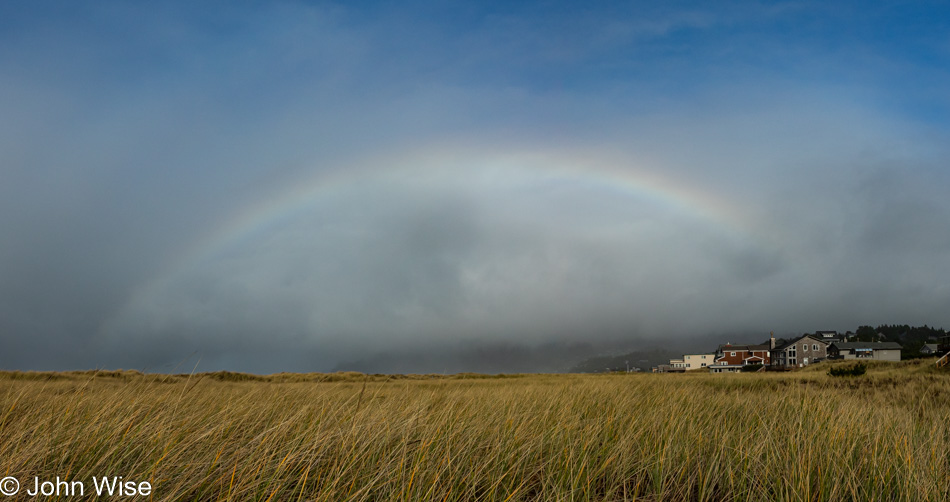
A faint rainbow but a rainbow nonetheless. This could portend rain coming soon or that it’s moving on. Our positive vibe produces a feeling that whatever the weather did, it would have proven to be the perfect scenario for creating memories that will stand out as having helped form the best vacation ever. Until the next vacation to wherever it is, we go will win the mantle of Best Ever.

To the south and from the north, the sky looked foreboding, but right overhead, the happiness of John and Caroline created a bubble of delight that everyone else on the beach was able to enjoy with us. How do I know it is us that are responsible for this phenomenon? Just ask Caroline for proof as she’ll join in my story that somehow, when we travel, we seem to have the perfect conditions and that a day rarely goes by, even in the cold seasons, when the sun doesn’t come out and smile upon us. To be honest, while probably needing to knock on wood, we never really understand other’s vacations where they complain that seemingly everything went wrong.
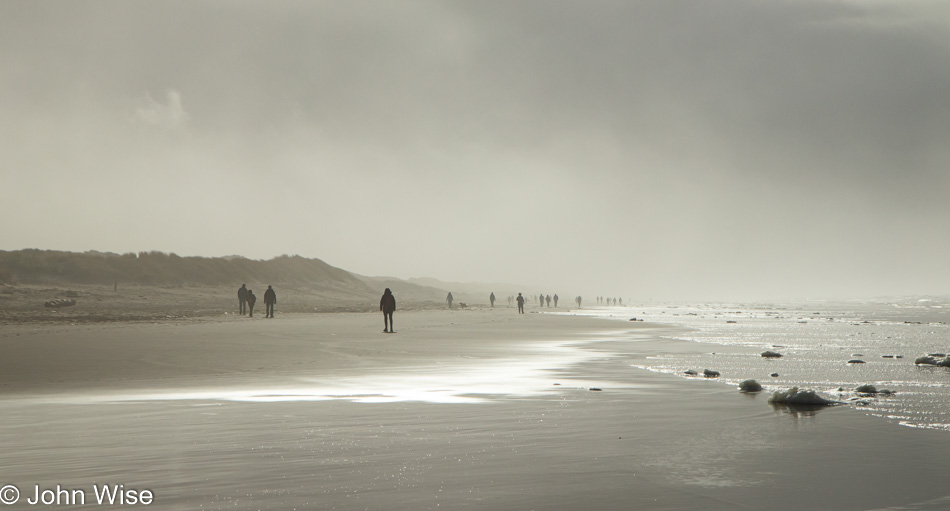
Okay, there was this issue of too many people on the beach, but that happens every Thanksgiving. We can be out for a walk along the ocean the day before and the day after, and there won’t be a lot of people with us, but just before the feasting begins at midday, the throngs come out to build their appetites. You can see from the density we were all quite aware of the social distancing requirements.
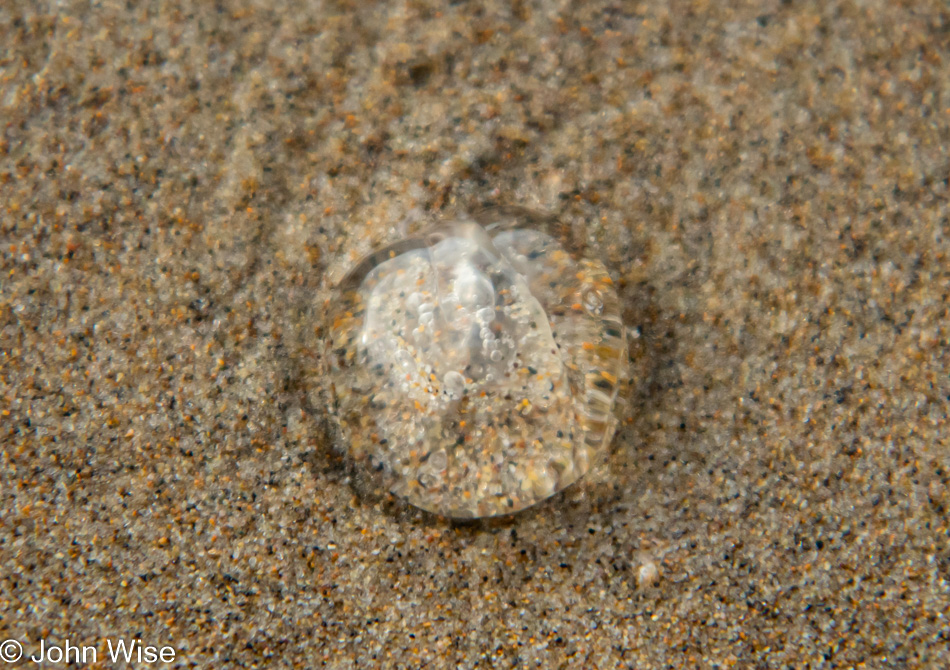
There were a few jellyfish onshore and some tiny little baby jellyfish. You can see the individual grains of sand, so I hope you glean an idea of just how small this transparent bubble of jelly was.
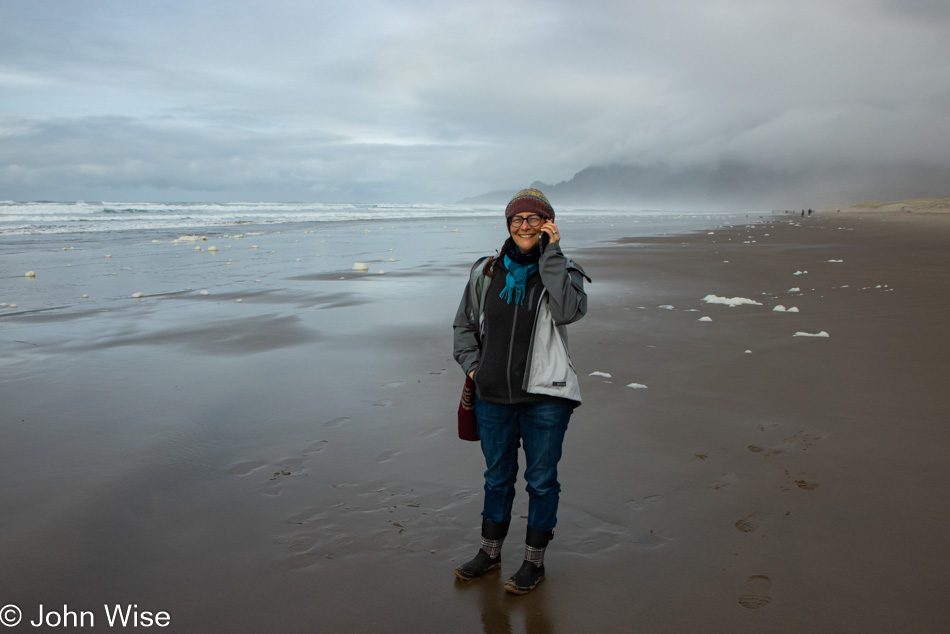
Taking a moment to think about the time we brought Jutta, Caroline’s mom up here, we checked to be sure it wasn’t too late in Germany and gave her a call from the beach. After that family connection, we called Caroline’s father, Hanns, on WhatsApp and were able to show him our location. I wish my mother-in-law was even a little tech-savvy like my father-in-law, as there’s so much more we could share with her. All the same, it’s always nice to hear her voice.
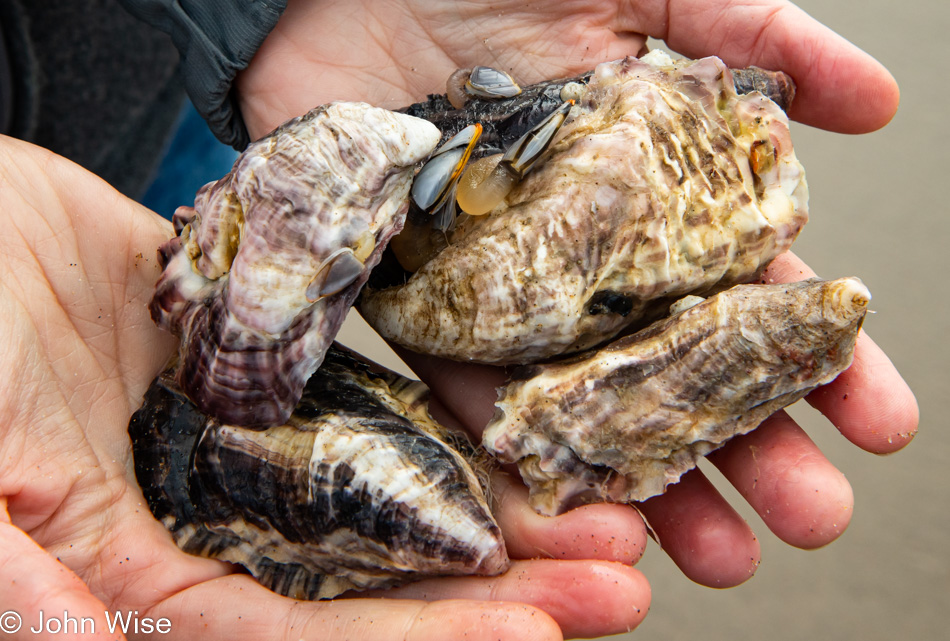
We saw a guy inspecting something on the beach; from afar, it looked like the carcass of a fish. As the surf came up, he dragged it ashore. We still couldn’t tell what it was, but we were heading right for him. He was on a video call showing a friend what he’d found: a large bag with hundreds of oysters in it. We asked for a peek into it as we’d never seen such a thing, and with that, he offered us all we’d like to take with us. Thanking him profusely for sharing his treasure, we only nabbed five of them, but before we got further down the beach, four of them found their way back into the sea. One came to the cottage with us.
We’ve had great oysters along the way during our travels, places we’d go back to because of the oysters. One thing we’ve never had is to eat an oyster that’s only been out of the ocean for an hour. For Caroline, this was a milestone because not only did she eat this mollusk, but she pried it out of its shell. No hot sauce, no lemon, just a bit of the seawater that was still in the shell, and she loved it.

We were over 5 miles (8km) on our walk by the time we got back to the cottage, hungry and ready for some lazy time. Around 3:30, our Creole Pork Turducken Roll from the CajunGrocer in Louisiana was placed into the oven. At four pounds, it was recommended we cook it for 2.5 hours. Caroline nor I have ever had Cajun pork sausage stuffed into a chicken, stuffed into a duck, stuffed into a turkey, but we were willing to try it.
It’s 6:00 p.m. as I write this, and our Thanksgiving meal is sitting on the stovetop, resting for the recommended 20 minutes. It smells great, just like a traditional turkey dinner, really, but a taste test will need to happen before I can offer more. Yesterday, we made a Cranberry Jello Mold, an old recipe from my mom that features chopped cranberries, celery, and walnuts, with shredded apples, a bit of orange juice, a box of raspberry Jello, and while it may sound strange, it’s an all-time favorite of ours. Lastly, we also have a sweet potato to add a veggie to our dinner.
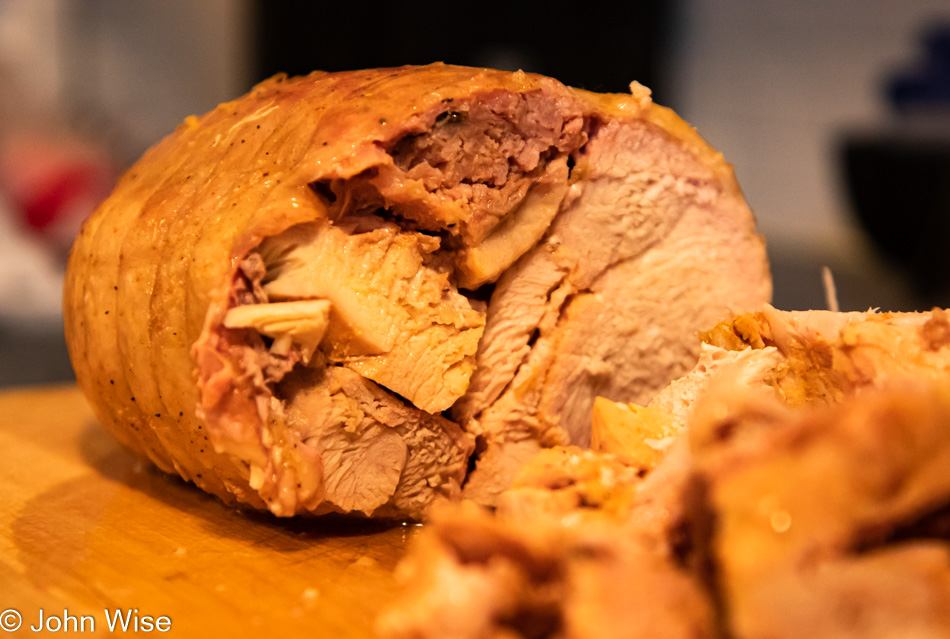
We’d do this again; the same cannot be said about the Tofurkey we tried years ago. The only thing missing was some gravy but we weren’t that prepared out on this journey for getting that detail-oriented. We have enough leftovers to add to our scrambled eggs with the last packet of Chinese pickled veggies for breakfast, and we have four slices for sandwiches. Come to think of it; maybe we’ll have open-face turducken with melted smoked brie for lunch if we are near the cottage.
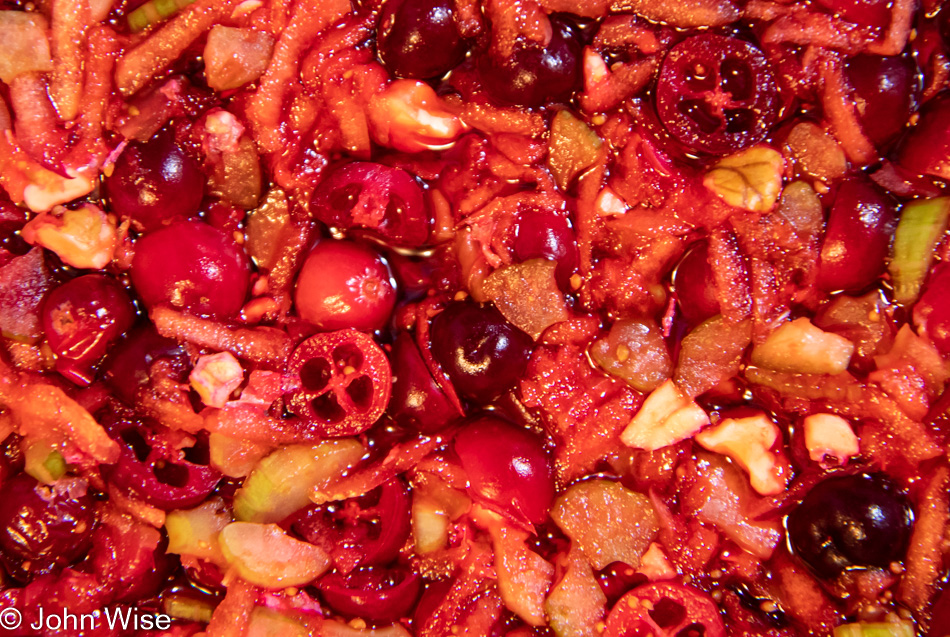
Other than using cranberries for scones, this is the best dish ever for cranberry lovers. Because we’ve been doing our best to self-isolate on this trip, we brought our frozen cranberries with us instead of picking up fresh local ones. We couldn’t even be certain we’d find local cranberries as although the Oregon coast is a popular place to grow them, we don’t know what’s found in the local markets. Next up, a dip into the hot tub before heading to the bedroom where the TV is; we’ll be watching My Octopus Teacher and sharing a bag of microwave popcorn. I’m sharing this because all three of these activities are out of the ordinary for us.

